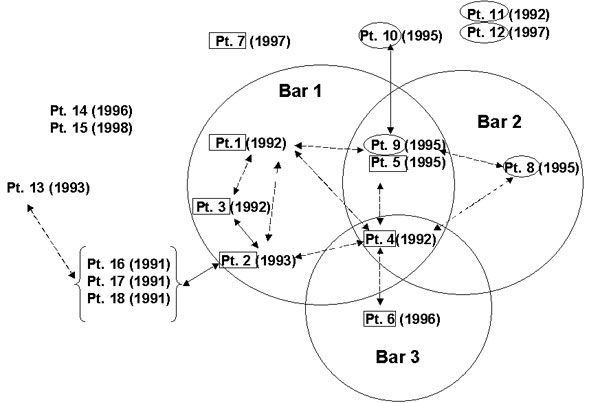Volume 8, Number 11—November 2002
THEME ISSUE
Tuberculosis Genotyping
Tuberculosis Genotyping Network, United States
Mycobacterium tuberculosis Transmission between Cluster Members with Similar Fingerprint Patterns
Figure 2

Figure 2. Epidemologic links among tuberculosis patients, Arkansas, 1992–1998. The circles represent the three public bars associated with the cluster of patients. Patient (Pt.) numbers enclosed with boxes and oval circles show patient isolates with patterns A and B, respectively. Parentheses show year of diagnosis. Solid black lines show epidemiologic links found during contact investigations. Dashed black lines show additional epidemiologic links discovered after DNA fingerprinting was done on the isolates and after standardized interviews were conducted with the clustered patients. Absence of lines means that no epidemiologic links were discovered for patients.
Page created: July 19, 2010
Page updated: July 19, 2010
Page reviewed: July 19, 2010
The conclusions, findings, and opinions expressed by authors contributing to this journal do not necessarily reflect the official position of the U.S. Department of Health and Human Services, the Public Health Service, the Centers for Disease Control and Prevention, or the authors' affiliated institutions. Use of trade names is for identification only and does not imply endorsement by any of the groups named above.